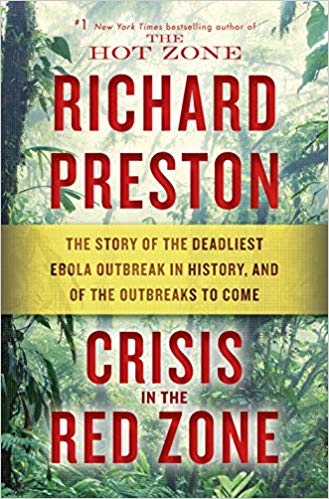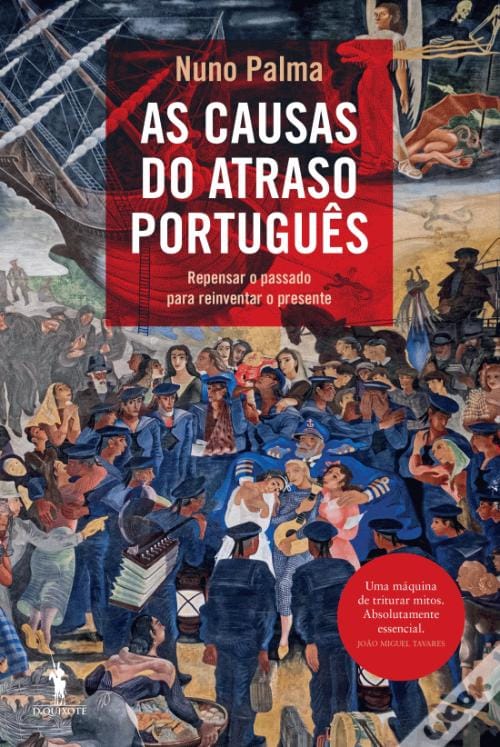By Richard Preston (2019)
Pages: 369, Final verdict: Great-read
The ebola epidemic of 2014 sent shock waves of terror across the globe. As the virus spread with unstoppable force across West Africa, the world was flooded with images of the people covered in full body suits, plastic tents turned into ebola wards and a sea of expressionless faces of its victims.
Crisis in the red zone , from best-selling author and New York reporter Richard Preston, is an extraordinary account of a virus armed with a ferocious appetite that claimed more than 11 000 lives, and of the heroes that fought it.
1976: The birth of the beast
The book follows the chronological story of Ebola, from its first outbreak in Zaire (now the Democratic Republic of Congo) in 1976 to the 2014 epidemic. But to understand how it become of one the deadliest virus of recent history, it is worth knowing what what ebola is, and how it spreads:
- Ebola is a virus, a very small capsule made of proteins that are genetically programmed to replicate themselves indefinitely inside their host;
- It exists endogenously in wild creatures (we don't know which yet) in equatorial Africa and is able to cross jump species between animals and humans;
- The virus spreads through contact with the bodily fluids of a carrier of the virus (sweat, urine, tears, etc);
- It is highly contagious and effective. It can destroy a person's immune system in 7 to 10 days.
When it first arrived in the Yambuku catholic mission in 1976, ebola was a nameless, scary disease that looked like Malaria but killed like smallpox. Facing with unknown disease in a fragile environment with little infrastructure and basic sanitary conditions, there was not much doctors could do. The virus killed 88% of its victims before being contained thanks to the quarantining local villagers and the introduction of basic hygienic practices in the community.
37 years later it re-appeared through the fragile hands of a small boy in a rural village in Guinea.
2014: The year of ebola
After covering the origins stories of ebola, the rest of the book deep dives into the 2014 outbreak, with special emphasis on the nurses and doctors on ground in Africa. In Kenema, the third largest city in Sierra Leone and ground zero for ebola, a bio containment unit turned into ebola ward was to be the central scene of the battlefield.
The virus broke ground in West Africa like a twisted game of domino, travelling diligently from the remote villages on the banks of the Moa river to the bustling cities of Sierra Leone, Guinea and Liberia. Someone would get infected and feel sick, family members and caregivers would rush in to help, get themselves infected and restart the deadly cycle. To make matters worse, traditional funeral ceremonies would gather large crowds who would pay respect to their loved ones, often through physical acts contact with the deceased, unknowingly extending the reach of the virus across villages, cities, and countries.
In the midst of recollecting these events, Crisis in the red zone does a great job placing the reader in the ebola battlefield, with vivid descriptions of the advances of the disease and the doctors attempts to warn local populations of the virus and how to contain it, often received with skepticism, violence and anger.
And while the virus was spreading in West Africa, teams of researchers in the US were working around the clock to sequence the genome of the virus and doctors from the WHO and Doctors without borders were being sent on missions to help local healthcare officials in understaffed, under resourced facilities.
The book takes the reader in rapid succession between the doctors on the field in Congo, the global health community in Switzerland and the spread of the virus to Liberia and Guinea. At the center of this thriller remains Kenema. The frantic attempts at containing the virus, a hospital in complete distress as the disease starts claiming the lives of its staff all the eventual containment and triumph over the epidemic.
Bottom line
The 2014 ebola outbreak was a scary episode of our vulnerability against the dark forces of nature. It took the lives of thousands of civilians, nurses, doctors and other brave man and woman who fought to protect their communities.
In the end, Crisis in the red zone is not a book about a virus, but about people. It is a sharp reminder of what happens when nature tries to take the best of us and how technological and societal advancements coupled with the bravery and relentless willpower of people made the impossible possible.
And if you're looking for something out of your comfort zone and have the stomach for a few explicit tellings of all things medical, I highly recommend spending a few hours immersed in this great story.



